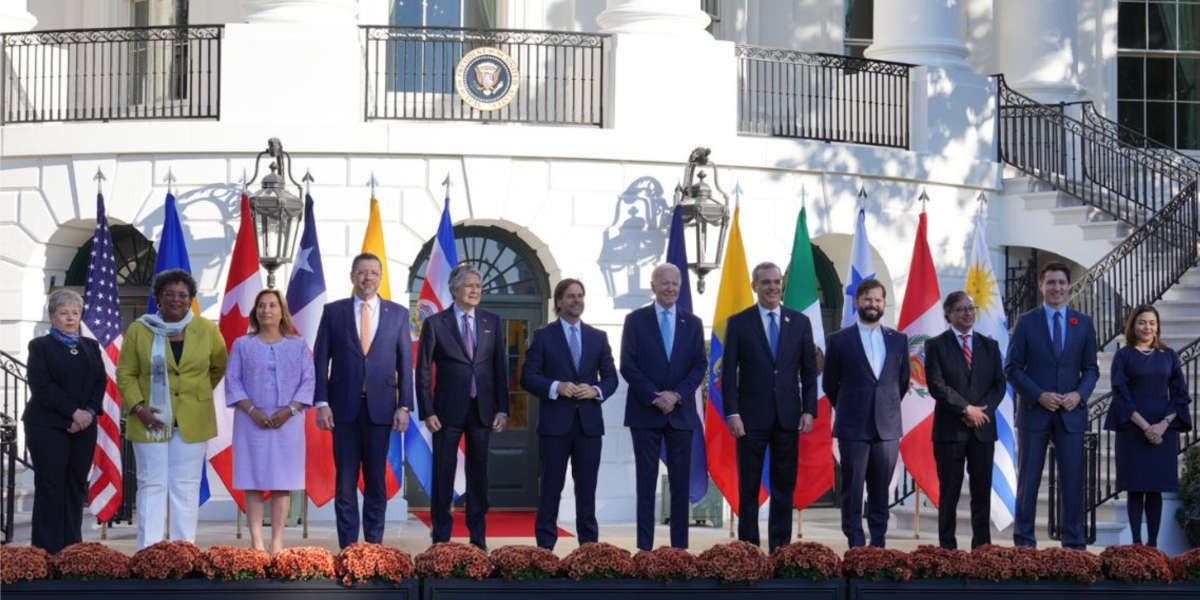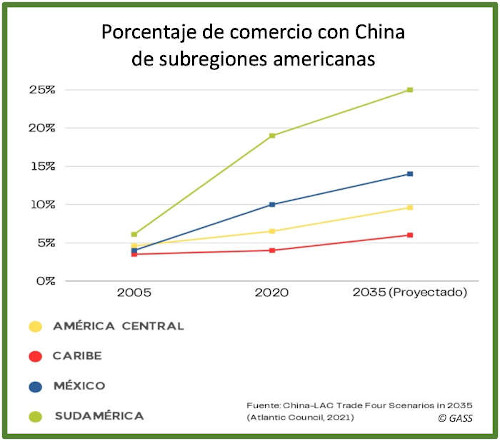In the picture
APEA Presidents' Summit at the White House in November 2023 [White House].
The Alliance for Economic Prosperity in the Americas (APEA) is the Biden Administration's initiative for cooperation with the rest of the Western Hemisphere. Through it, the United States aims to help address the economic challenges of its neighbors, while countering Chinese influence in the region. However, the lack of concrete trade incentives, the absence of players core topic such as Brazil and Argentina, and the lack of strategic definition at the first summit raise doubts about its effectiveness. instructions Although it may not achieve its desired objectives, APEA is perceived as a valuable starting point that could set the stage for future U.S.-led initiatives that better match the aspirations of Latin American countries.
The Economic Prosperity Partnership of the Americas was announced on June 8, 2022 by President Biden at the Summit of the Americas, where he presented it as a legitimate step in building a true and substantive alliance with trusted trading partners in the Western Hemisphere. On January 27, 2023, the member countries signed a joint declaration for the implementation of the initiative. In addition to the United States, they are Barbados, Canada, Chile, Colombia, Costa Rica, Dominican Republic, Ecuador, Mexico, Panama, Peru and Uruguay.
With the creation of APEA (known in English as the Americas Partnership for Economic Prosperity, with the acronym APEP), the United States aims to develop a platform that establishes its influence in the continent, through a regional collaboration capable of addressing economic challenges, including recovery from the AIDS-19 pandemic and progress towards more inclusive and sustainable growth, according to official documents.
Previous U.S. attempts to increase its influence in the Western Hemisphere through the creation of a broad free trade zone failed, mainly due to the lack of a general political agreement in the region (the United States has agreements with its North American neighbors and with Central America, as well as with Chile, Peru and Colombia, but there is no continental agreement ). Thus, the Alliance for Economic Prosperity of the Americas emerges as a solution to promote Washington's economic cooperation with the American continent, attracting for the time being those countries willing to a greater commercial interaction, although without reaching the stage of free trade (the government of Uruguay has seen it as a step in that direction, at least bilaterally).
One of the main objectives of the alliance is based on the U.S. claim to act as a counterweight to China's growing influence in Latin America and the Caribbean (twenty-one states in the region are members of China's 'One Belt, One Road' initiative; four have already concluded free trade agreements with China), where it has established itself as the second largest trading partner . Along these lines, APEA aims to offer the Caribbean and Latin American states tangible economic reasons to reduce their dependence on Beijing. In addition, APEA promotes the implementation of multiple infrastructure projects and development, with more sustainable approaches than those promoted by China.
Joe Biden himself recently stated that the alliance aims to ensure that the United States' closest neighbors know that they can choose between 'debt trap' diplomacy (at reference letter to the indebtedness that some countries achieve with China by being at the mercy of this power) and high-quality, transparent approachesat subject for infrastructure and development.


